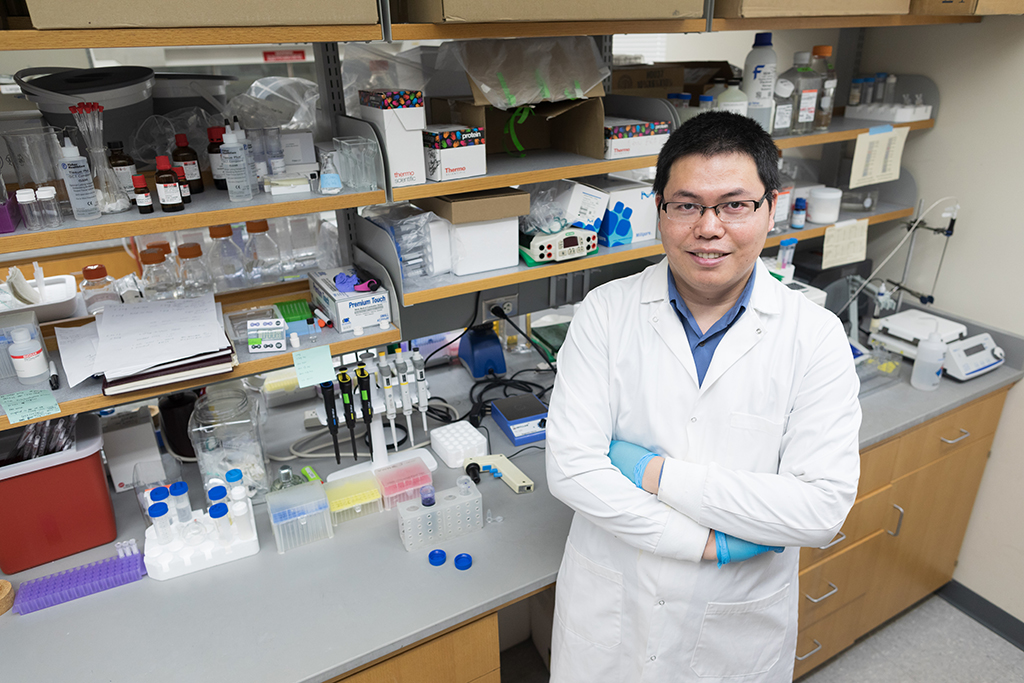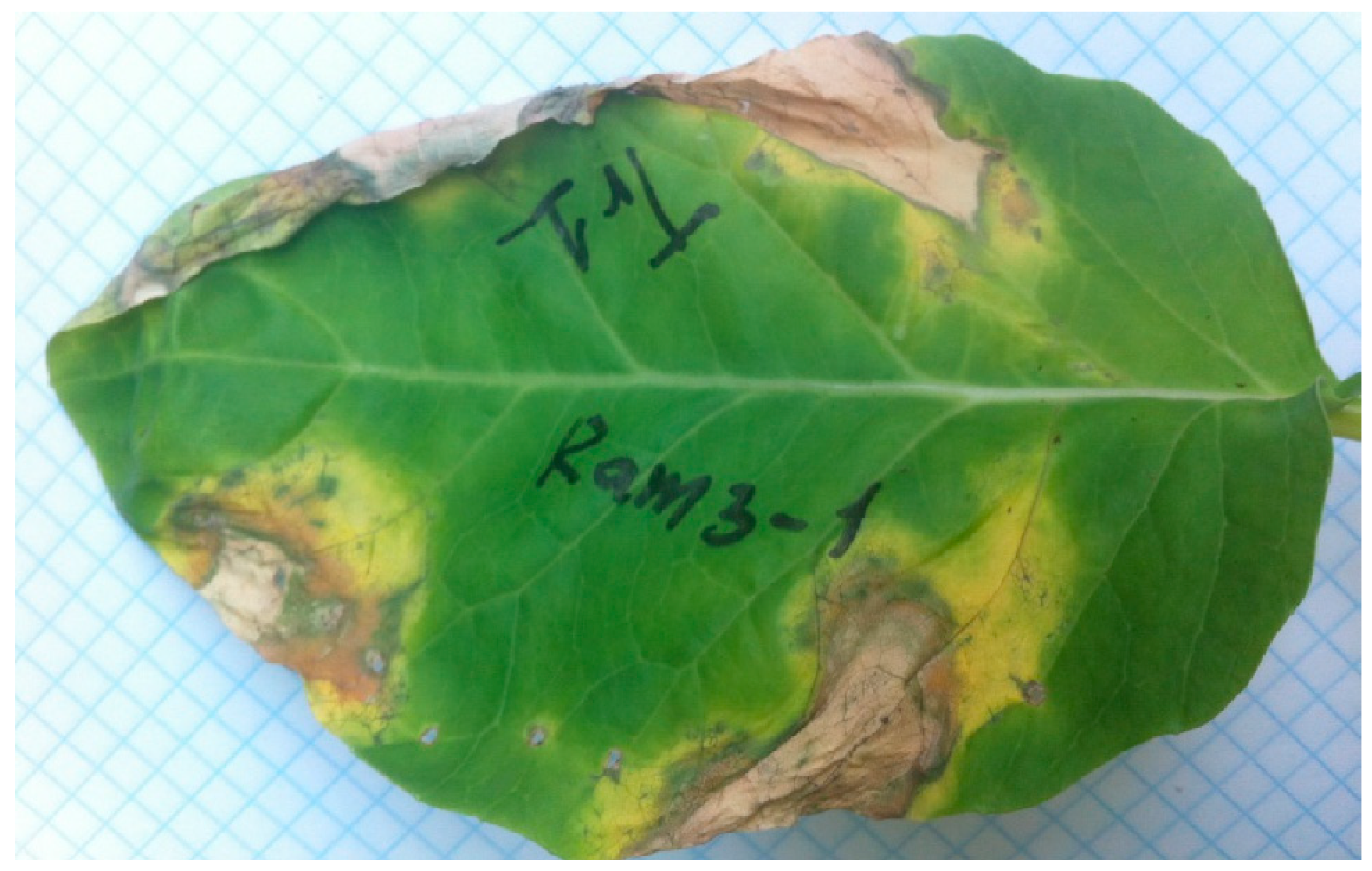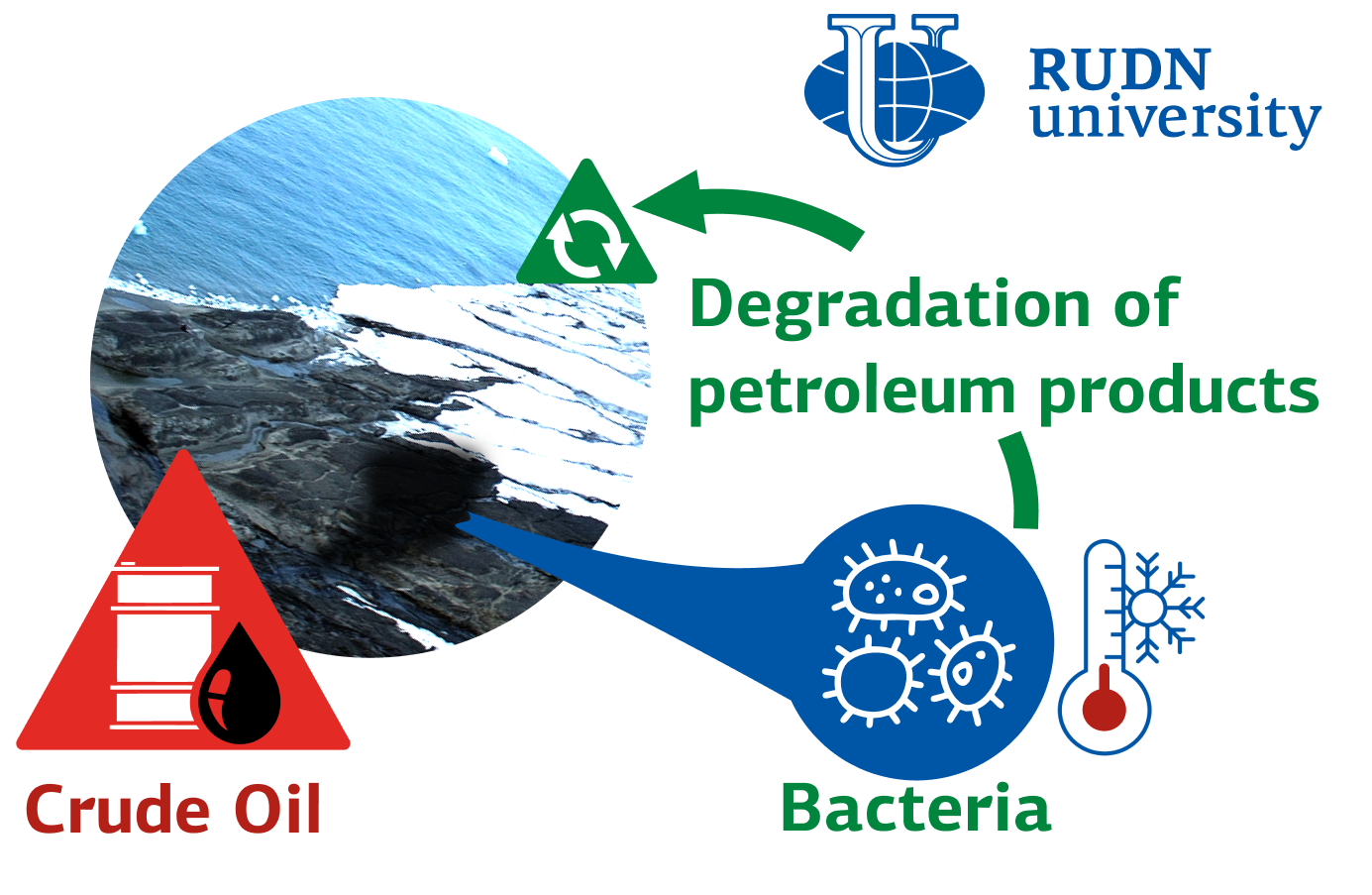Researchers preparing slides of live bacteriophages were surprised to see them link and form naturally into three-dimensional flower shapes in reaction to contact with high-pressure carbon dioxide. The discovery is welcome news for researchers who had been trying to network phages articifially to boost their power.
Tag: Bacteria
One of the first of its kind, UAH study characterizes urinary microbes in children
Until recently, it was believed that human urine is sterile, but advanced culturing techniques and DNA sequencing have revealed that bacteria and other microbes – such as viruses and fungi – inhabit the human bladder and urinary tract, known collectively as the “urobiome.” Now in study that is one of the first of its kind, Dr.
Turning bacteria into bioplastic factories
Biologists find new ways to encourage the plastic-producing power of purple microbes.
Gut bioelectricity provides a path for bad bacteria to cause diseases
UC Davis Health researchers has discovered a novel bioelectrical mechanism pathogens like Salmonella use to find entry points in the gut lining that would allow them to pass and cause infection.
A Genetic Analysis of Lyme Disease Could Improve Diagnosis and Treatment
Researchers have mapped 47 different strains of the bacteria that cause the illness.
FAU Lands $1.3M NSF Grant to Boost Dryland Soil Quality Amid Climate Stressors
Drylands, found across every continent, cover about 45% of the Earth’s land surface and support 38% of the human population. The NSF grant will enable scientists to enhance understanding of climate resistance of individual microbes and to improve microbial remediations to reduce soil degradation under climate change.
New compound effective against flesh-eating bacteria
Researchers at Washington University School of Medicine in St. Louis have developed a compound that is effective against common bacteria that can lead to rare, dangerous illnesses.
Dual action antibiotic could make bacterial resistance nearly impossible
New drug that disrupts two cellular targets would make it much harder for bacteria to evolve resistance
FDA Warns of Bacteria Found in Sealed Bottles of Tattoo Ink
The US Food and Drug Administration is warning of bacteria found in sealed bottles of tattoo link, which has also been discovered in permanent makeup ink. The new research by the FDA shows tattoo inks themselves have been identified as…
Human Plague Case Confirmed in Colorado
A human case of plague has been confirmed in a Colorado resident. The case was identified in Pueblo County. According to county public health officials, the resident was diagnosed following a four-day investigation based on preliminary test results. Right now,…
Getting bacteria into line
Researchers at Finland’s Aalto University have found a way to use magnets to line up bacteria as they swim. The approach offers more than just a way to nudge bacteria into order – it also provides a useful tool for a wide range of research, such as work on complex materials, phase transitions and condensed matter physics.
Opportunistic Colonizers: Selectively Targeting Tumor Cells with Bacteria
Live bacteria can be applied in cancer therapy given their ability to deplete nutrients and induce cell death in tumors. However, the interaction between bacteria and tumor cells is risky and can exacerbate the inflammatory response and the expression of anti-apoptotic genes.
Infectious Disease Doctor: Flying This Summer? Here’s What You Should Know Before Boarding.
The TSA just reported an all-time high for the number of airline travelers screened, and major U.S. airlines expect to transport 271 million passengers this summer, a 6.3 percent increase from last year. Now, board-certified infectious disease physician Carl Abraham, M.D., assistant…
Baby Formula Could Be Contaminated with Bacteria, FDA Warns
A new warning from the US Food and Drug Administration says a certain type of baby formula could be contaminated with bacteria. The warning is for Crecelac Infant powdered goat-milk infant formula zero to 12 months, Farmalac baby powdered infant…
An anti-inflammatory curbs spread of fungi causing serious blood infections
Study finds that mesalamine, a common anti-inflammatory drug, can fight the fungus Candida albicans in the gut, potentially preventing the risk of invasive candidiasis in patients with blood cancers.

Unlocking the secrets of citrus greening: a milestone in cultivating Candidatus liberibacter asiaticus
Researchers have achieved significant progress in understanding citrus greening by developing a method to cultivate Candidatus Liberibacter asiaticus (Las) in vitro. This bacterium is responsible for the devastating citrus disease Huanglongbing (HLB). The study’s findings pave the way for further research into the pathogen’s biology and potential control strategies.

For microscopic organisms, ocean currents act as ‘expressway’ to deeper depths, study finds
New research shows how tiny plant-like organisms hitch a ride on ocean currents to reach darker and deeper depths, where they impact carbon cycling and microbial dynamics in the subtropical oceans.

Pancreatic cancer is difficult to treat. Nano-drugs hitching a ride on bacteria could help.
Many pancreatic tumors are like malignant fortresses, surrounded by a dense matrix of collagen and other tissue that shields them from immune cells and immunotherapies that have been effective in treating other cancers. Employing bacteria to infiltrate that cancerous fortification and deliver these drugs could aid treatment for pancreatic cancer, according to newly published findings from a team of University of Wisconsin–Madison researchers.
Soil Bacteria Link their Life Strategies to Soil Conditions
Microbiologists do not fully understand how bacteria’s genes relate to their life strategies. Now, by analyzing large DNA sequencing datasets from around the globe, researchers discovered a new way of categorizing the dominant life strategies of soil bacteria based on their genes. This technique allowed the researchers to link different life strategies with specific climate and soil conditions.
Research Demonstrates that Cells Multitask in Bacterial Biofilms
A team of scientists led an experimental study to determine the relationships between subpopulations of cells within the biofilm of a model microbe, revealing new insights regarding their potential.
Liquid crystal nanoparticles supercharge antibiotics for cystic fibrosis
Cystic fibrosis is the most common, life-limiting genetic condition in Australia. It affects the lungs, digestive system, and reproductive system, producing excess mucus, infections, and blockages.
Exploring the Transferability of Extracytoplasmic Function Switches Across Bacterial Species
Extracytoplasmic function sigma factors (ECFs) have been successfully used for constructing predictable artificial gene circuits bacteria like Escherichia coli, but their transferability between species within the same phylum remained unknown.

RUDN agronomists found a virus that can defeat a bacteria dangerous to plants
RUDN University agronomists have discovered a bacteriophage that destroys bacteria dangerous to cabbage and other plants.
Binghamton University biologist named Fellow of American Academy of Microbiology
Binghamton University, State University of New York researcher Karin Sauer is among 65 scientists elected as Fellows of the American Academy of Microbiology this year. Fellows are elected by their peers based on their scientific achievements and original contributions to the field of microbiology.

Study Details How a Common Bacterium Resists New Antibiotic
Cedars-Sinai investigators have detailed a new way that bacteria use iron to cooperate and resist antibiotic treatment. The study, led by the Cedars-Sinai departments of Biomedical Sciences and Pathology and Laboratory Medicine, is published in the peer-reviewed journal Nature Microbiology and is the first to show this type of antibiotic cross-protection.
‘Dynamic duo’ defenses in bacteria ward off viral threats
Scientists at the University of Southampton have discovered that bacteria can pair up their defense systems to create a formidable force, greater than the sum of its parts, to fight off attack from phage viruses.
Beyond peak season: Bacteria in the Arctic seabed are active all year round
Despite the pronounced seasonality in their habitat, the bacterial community in Arctic sediments is taxonomically and functionally very stable.
Protect Yourself Against Salmonella
David Winter, MD, at Baylor Scott & White Health, says proper hygiene is key to fighting against salmonella. What You Need to Know: Salmonella can cause severe diarrhea. Get a diagnosis first before treating salmonella. Salmonella symptoms include fever and…

Cold-resistant bacteria found in the Arctic can degrade crude oil
Biologists from the Research Center of Biotechnology and RUDN University found bacteria on Franz Josef Land that adapted to low temperatures and learned to degrade petroleum products.
Organic compound found in trees could prevent contact lens eye infections
A new study, by the University of Portsmouth in England and Naresuan and Pibulsongkram Rajabhat universities in Thailand, suggests a naturally-occurring material is an effective disinfectant for contact lenses and could help millions of people worldwide.
Creating a Virus-Resistant Bacterium Using a Synthetic Engineered Genome
To improve bioproducts productivity, researchers have engineered the genome of E. coli to make it immune to viral infections.
New Technology Unscrambles the Chatter of Microbes
Researchers from University of California San Diego have developed a new search tool to that can match microbes to the metabolites they produce with no prior knowledge, an innovation that could transform our understanding of both human health and the environment.
Specific gut bacteria increase risk of severe malaria
Researchers have identified multiple species of bacteria that, when present in the gut, are linked to an increased risk of developing severe malaria in humans and mice. Their findings could lead to the development of new approaches targeting gut bacteria to prevent severe malaria and associated deaths.
Rutgers Awarded NIH Grant to Study How Previous Infections Affect Immune Response to Lung Disease
Researchers will examine how the body’s adaptations to viruses, fungi and parasites change its ability to combat unrelated respiratory infections.
Novel enzyme family could provide insights into bacterial pathogenicity
Researchers discover a new family of Gram-negative bacterial enzymes related to infection capability
Using Different Flours for Sourdough Fosters Different Bacteria – and Flavors
A new study of the microbial ecosystem in sourdough finds that using different types of flour fosters distinct bacterial communities, and that these differences contribute to the variation of sourdough aromas and flavors.

Not all viruses are harmful
During the COVID-19 pandemic, people became well aware that viruses can be extremely harmful. But can viruses also be helpful? Bryan Hsu aims to find out by studying viruses that infect bacteria in the bellies of mammals.
HMS Researcher to Lead $104 Million Federal Project Tackling Antibiotic Resistance
Multi-institutional effort aims to develop technology to transform diagnosis, treatment of bacterial infections
Gotcha! New technology speeds up bacterial testing in food
It is said that there is waste in haste, but researchers from Osaka Metropolitan University have proven that doing things rapidly does not necessarily mean working ineffectively.
Bacteria generate electricity from wastewater
“We engineered E. coli bacteria, the most widely studied microbe, to generate electricity,” says Professor Ardemis Boghossian at EPFL. “Though there are exotic microbes that naturally produce electricity, they can only do so in the presence of specific chemicals.
How bacteria surf cargo through the cell
The University of Michigan researchers found some bacteria ship cellular cargo by “surfing” along proteins called ParA/MinD ATPases
Race-based variations in gut bacteria emerge by 3 months of age
Variations in the gut microbiome are linked to the incidence and mortality of diseases. A new study highlights a critical development window during which these differences emerge. The findings are based on analysis of data from 2,756 gut microbiome samples from 729 U.S. children between birth and 12 years of age.
Common Wristbands ‘Hotbed’ for Harmful Bacteria Including E. Coli, Staphylococcus
Routinely cleaning wristbands is generally ignored. New research finds 95 percent of wristbands tested were contaminated. Rubber and plastic wristbands had higher bacterial counts, while gold and silver, had little to no bacteria. Bacteria found were common skin residents of the genera Staphylococcus and Pseudomonas, and intestinal organisms of the genera Escherichia, specifically E. coli. Staphylococcus was prevalent on 85 percent of the wristbands; researchers found Pseudomonas on 30 percent of the wristbands; and they found E. coli bacteria on 60 percent of the wristbands, which most commonly begins infection through fecal-oral transmission.
A Single Gene and a Unique Layer of Regulation Opens the Door for Novel Plant-Fungi Interactions
Plants have a complex layer of regulation that allows beneficial fungi to colonize their roots while protecting them from harmful ones such as pathogens. Researchers recently identified the underlying plant signaling processes within this layer of regulation that permits a specific beneficial bacteria species to colonize the roots of switchgrass.
Imaging shows how solar-powered microbes turn CO2 into bioplastic
Cornell University researchers have developed a multimodal platform to image biohybrids —microorganisms that use solar energy to convert carbon dioxide into value-added chemical products — to better understand how they function and how they can be optimized for more efficient energy conversion.
New Resource Harmonizes 16S and Shotgun Sequencing Data for Microbiome Research
UC San Diego scientists debut Greengenes2, a massive reference database that could be used to reconcile years of microbiome studies.
Host Genetics Play a Significant Role in the Composition of Switchgrass Root Microbiomes
A new study investigated the role of the genes in individual switchgrass plants in determining the composition of the bacterial communities associated with the plants’ roots.
Differences in alcohol metabolism play a role in the severity of alcohol hangovers
Hangovers are common among people who drink alcohol. Previous research showing that a hangover’s combination of both mental and physical misery can occur after a single episode of alcohol consumption also revealed that a rapid breakdown of alcohol into acetaldehyde is associated with less severe hangovers. Findings from an investigation of the metabolic influence of oral microbiota on hangover severity will be shared at the 46th annual scientific meeting of the Research Society on Alcohol (RSA) in Bellevue, Washington.

Brain-Belly Connection: Gut Health May Influence Likelihood of Developing Alzheimer’s
UNLV study pinpoints 10 bacterial groups associated with Alzheimer’s disease, provides new insights into the relationship between gut makeup and dementia.

A Simple Antibacterial Treatment Solves a Severe Skin Problem Caused by Radiation Therapy
Acute radiation dermatitis (ARD)—characterized by red, sore, itchy or peeling skin—affects up to 95% of people undergoing radiation treatment for cancer. Severe cases can cause significant swelling and painful skin ulcers that can severely impair quality of life, yet little is known about why this condition occurs and no standardized treatments for preventing severe ARD have been widely adapted.